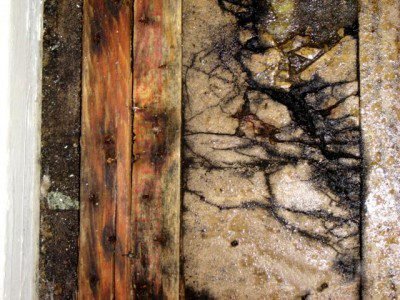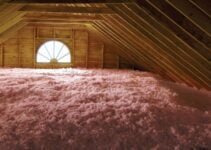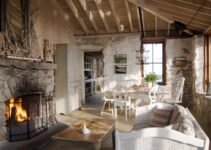Usually, a cottage is a house that you use only seasonal. Therefore, if this vacation home sits unused during the winter then it is virtually possible for mold to appear on the inside of window frames.
This unpleasant problem has nothing to do with the quality of wood used in the cottage construction or if the used wood was dry or less dry. Mold growth is always, related to an excessive humidity and poor ventilation. Therefore, the only solution is moisture control.
It may seem a little bizarre but this is the reality. Each house is built at least in part, from materials that are “food” for mold such as drywall, wallpaper, wood or carpet. In case of excessive humidity, the surfaces of these materials create optimal conditions for mold to grow. Fortunately, there are several of ways to control humidity level.
You need only to dry a surface and mold cannot grow even the material is one of the most preferred by mold.
Let us return to our cottage and see what it is the right solution for a house used only, seasonally.
You need to lower humidity level of your cottage during those months when you are not living there. The secret lies in an effective ventilation. In fact, if the outside temperature is cold then the cold air that gets inside will be dry. You do not need to heat your cottage when you are not living there. You need to create only the possibility that outside cold air to enter inside.
However, an exhaust fan makes a huge difference. It is very efficient and will ensure a proper ventilation. It consumes little energy and you can adjust it to the desired speed.
Only one more thing. It is a smart idea to leave the window curtains wide open to prevent mildew on the inside of window frames.
Clean Your Home with “Magic” Solutions – Tips and Ideas (howtobuildahouseblog.com)
VAPOUR BARRIER
The often asked question is whether the application of a vapor barrier inside the cottage basement wall frames can prevent the mould occurrence.
First, we need to know that the purpose of any vapor barrier is to keep the hot and humid air. If that happens then the warm and moistly air, will cool in its way to the outside and will condense inside the wall frame cavity creating ideal conditions for mold and mildew occurrence.
A vapor barrier can eliminate this hazard but it is somehow, tricky. It may be completely ineffective in winter. Moreover, a vapour barrier can contribute dramatically to mildew and mold occurrence, especially in winter. The outside cold air will enter through the basement walls inside the wall frame cavity and will condense behind the plastic vapor barrier. Mold and mildew will thrive in these favourable conditions and will compromise even the building structure.
Therefore, it is risky to use vapor barrier or fibre-based insulation in basement. There is no assurance that it will work. What makes things even more dramatic is that you cannot realize that you have a mold problem inside of the basement wall frame. You will notice maybe, a musty, unpleasant smell but it will be too late.
If you intend to install new drywall in your basement then the best is to paint these new walls. Paint will act as an efficient vapor barrier.
However, instead of fibre insulation it is less risky to use foam insulation for your basement walls. This kind of insulation does not absorb so much humidity as fibre insulation, therefore the risk of condensation is lower.



